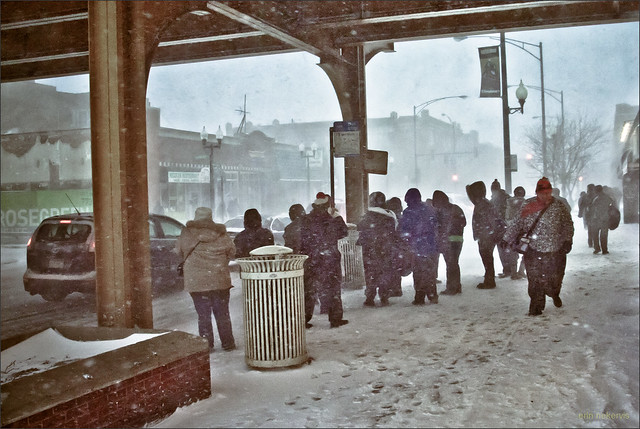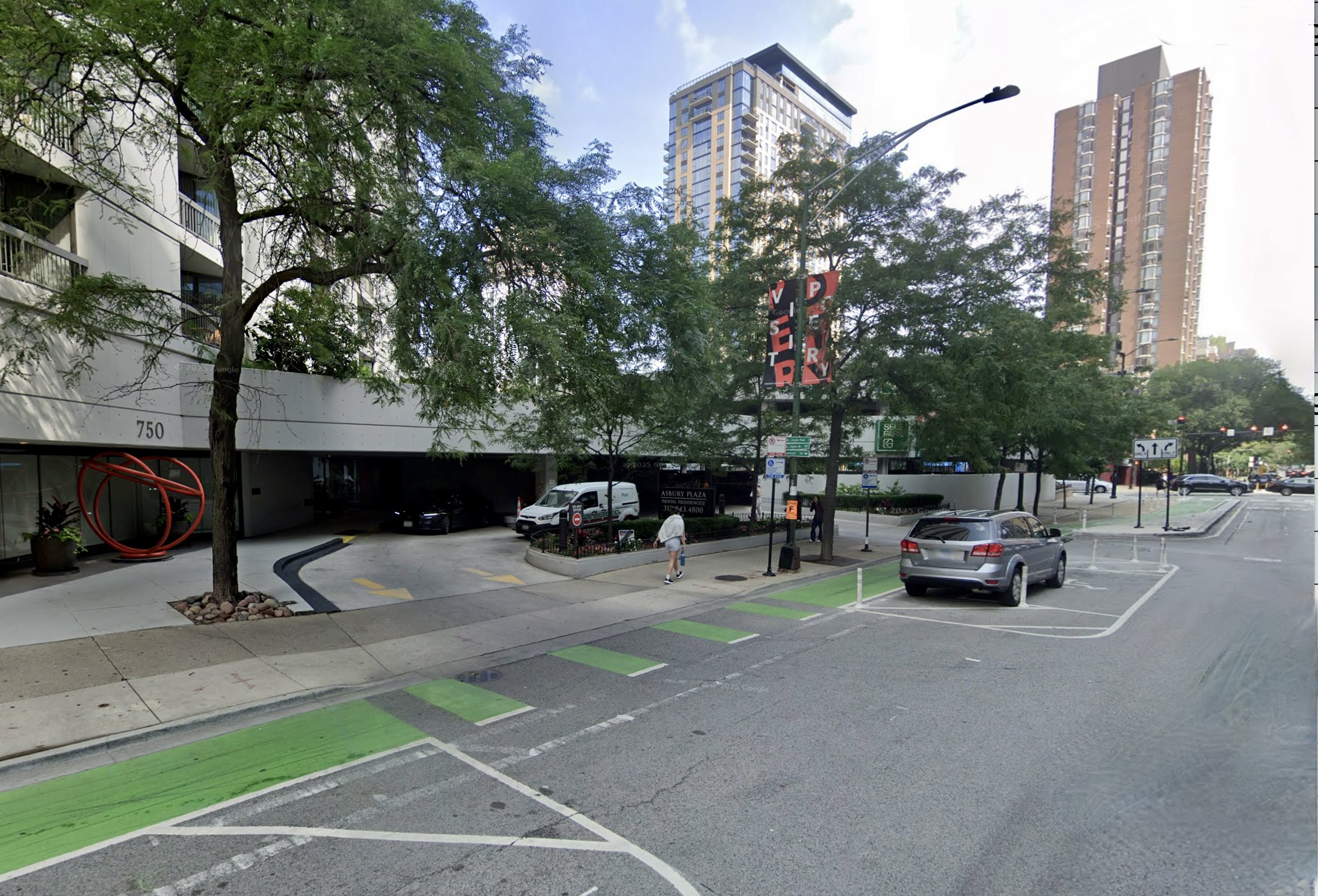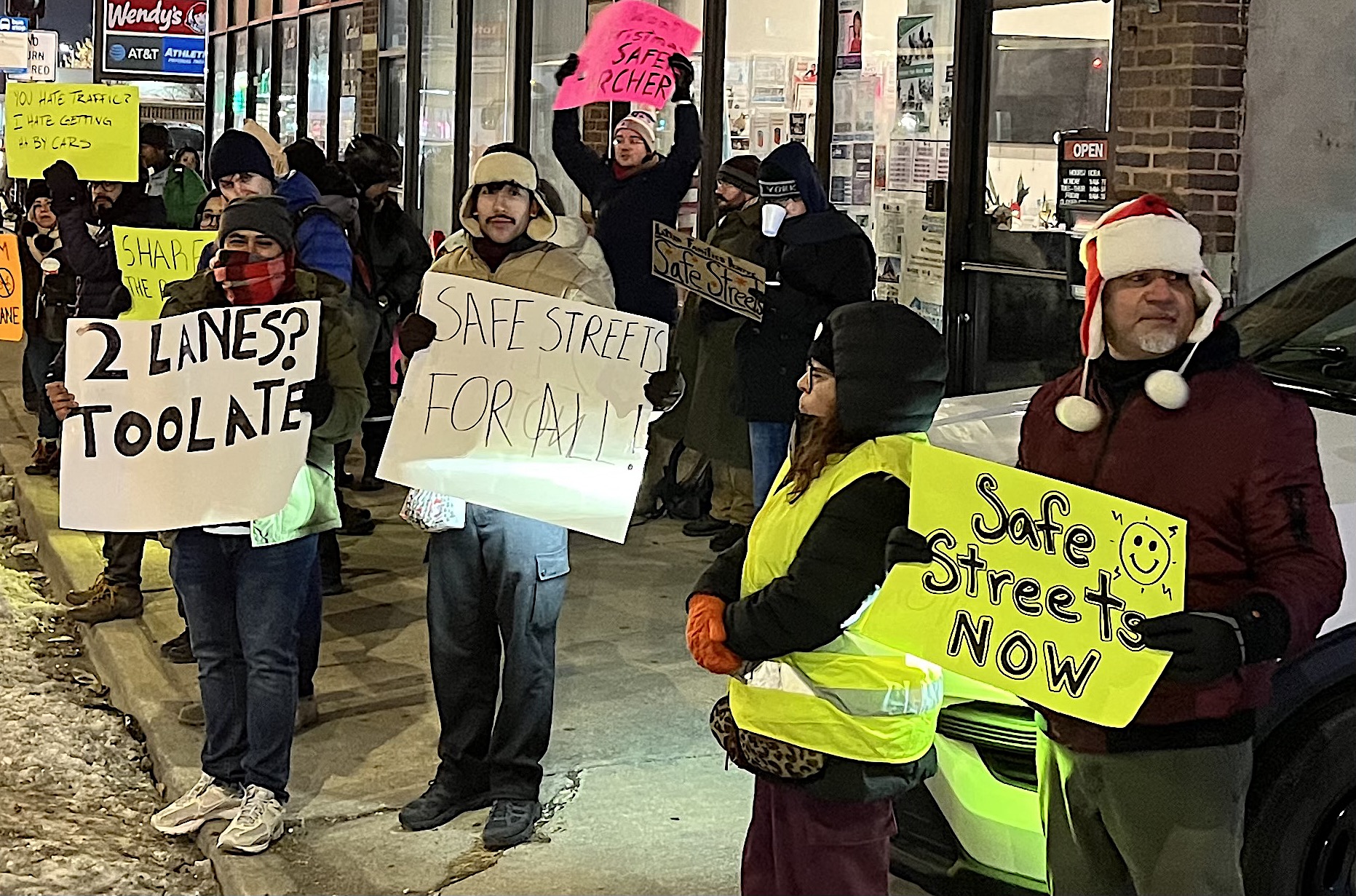It may only be August, but snow's already on the minds of the Mayor's Pedestrian Advisory Council. At this week's meeting, the Chicago Department of Transportation owned up to their shortcomings in providing clear pedestrian routes through the city during last winter's polar vortex conditions.
Luann Hamilton, deputy commissioner of project development at CDOT, said August was the right time to talk about it so that the council could get ahead of the issues. Also, she said, because of "what happened last winter, we don't want to wait too long" to talk about it.
Hamilton convened an interagency snow removal task force, which met for the first time last month. The meeting brought together representatives from CDOT's project development, in-house construction, and infrastructure management divisions, the Department of Streets & Sanitation, and the Department of Planning & Development, which oversees Special Service Areas.
Hamilton explained the task force "talked about the gaps, vacant lots, and unoccupied municipal facilities" and said CDOT needs to set an example. Hamilton relayed the results of this discussion to the advisory council members, and explained the city's broader strategy to remove snow from the public way. Laborers, like garbage truck drivers for example, can be reassigned to remove snow from in front of public facilities.
It was marvelous to hear CDOT acknowledge weaknesses in removing snow from these gaps, which have been a problem for people walking and using transit long before this year's "polar vortex." Hamilton described these gaps:
- Bridges outside downtown. CDOT starts by removing snow from bridges, like those over expressways and the river, in the central business district, then works out from there. Hamilton said that some of the outlying areas "don't always get prompt snow removal, but there is a plan to eventually get all the way to the edge of the city." Hamilton said that the Chicago Transit Authority "pitches in," and removes snow from the side of bridges (like those over the Eisenhower Expressway) on which they have station entrances.
- Viaducts and underpasses. CDOT, not the railroads, are not responsible for these sidewalks.
- "Orphaned" bus stops, without JCDecaux shelters. Hamilton said that these aren't addressed at this time. Ben Helphand, executive director of Neighborspace, pointed out that perhaps adjacent property owners are responsible for clearing these sidewalks.
- Curb ramps at corners go unaddressed, Hamilton said, because they're not always in front of someone's home.
- "Snow berms" created at driveways. It's illegal for property owners to push snow from their property into the public way. Gas stations and Walgreens stores are particularly common violators.
- Pedestrian islands. What were intended to be safe refuges for people crossing the street, Hamilton said, are not being cleared of snow. "Who's going to go into the middle of the street and remove the snow?," she asked rhetorically.
The task force discussed enforcement of existing laws, too. Hamilton said that CDOT, in fact, issues citations to commercial properties and large residential buildings, but abstains from citing small residential buildings -- they don't want to inadvertently fine a senior citizen, or a person with a disability, who's unable to shovel the walk. Additionally, she said, "there just aren't many [inspectors] doing the citations, so they have to choose their targets."
Citations, Hamilton said, are based on calls to 311. Violators get a warning first, then a citation on the second time around. Streetsblog inquired if "snow not removed" will be added to the Open311 system, and thus usable in associated smartphone apps like Chicago Works and SeeClickFix -- a move which could increase participation and reporting. CDOT pedestrian program coordinator Suzanne Carlson said that they are pursuing that strategy, adding that "we talked to the mayor's office the other day" about it, and will subsequently submit a formal request to the Department of Innovation and Technology.
Hamilton then opened the floor to members with, "We want to hear from you, are we missing anything?" A representative from Metro Seniors in Action spoke first, saying she believes there's an "information gap: People aren't getting the information, and then they're blowing it off." She suggested "putting a face" on the issue, and doing a press event to encourage the public to embrace accountability for snow removal.
Metropolitan Planning Council vice president Peter Skosey suggested working with the news media, similar to how crosswalk enforcement strings are done. Show the public, he explained, that we're going around putting out door hangers to inform property owners about the snow removal ordinance. Hamilton responded that they would need to get the mayor's office on board.
While there was little said about what CDOT intends to do about these gaps, Hamilton did go on record to say that the department is responsible for clearing many sidewalks, and that they've messed up. We'll have another report, after the next MPAC meeting on November 5, on how CDOT intends to address these gaps.





